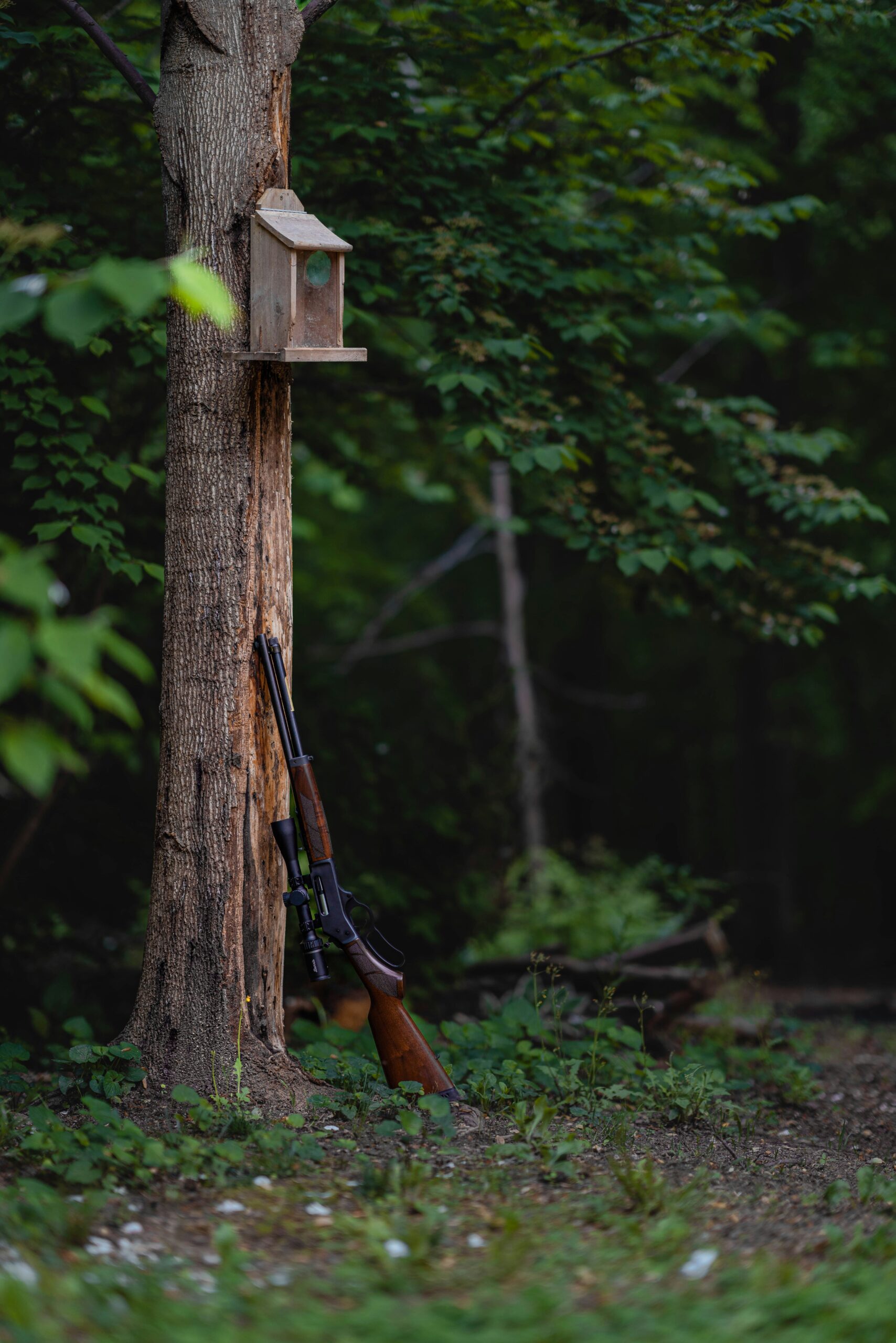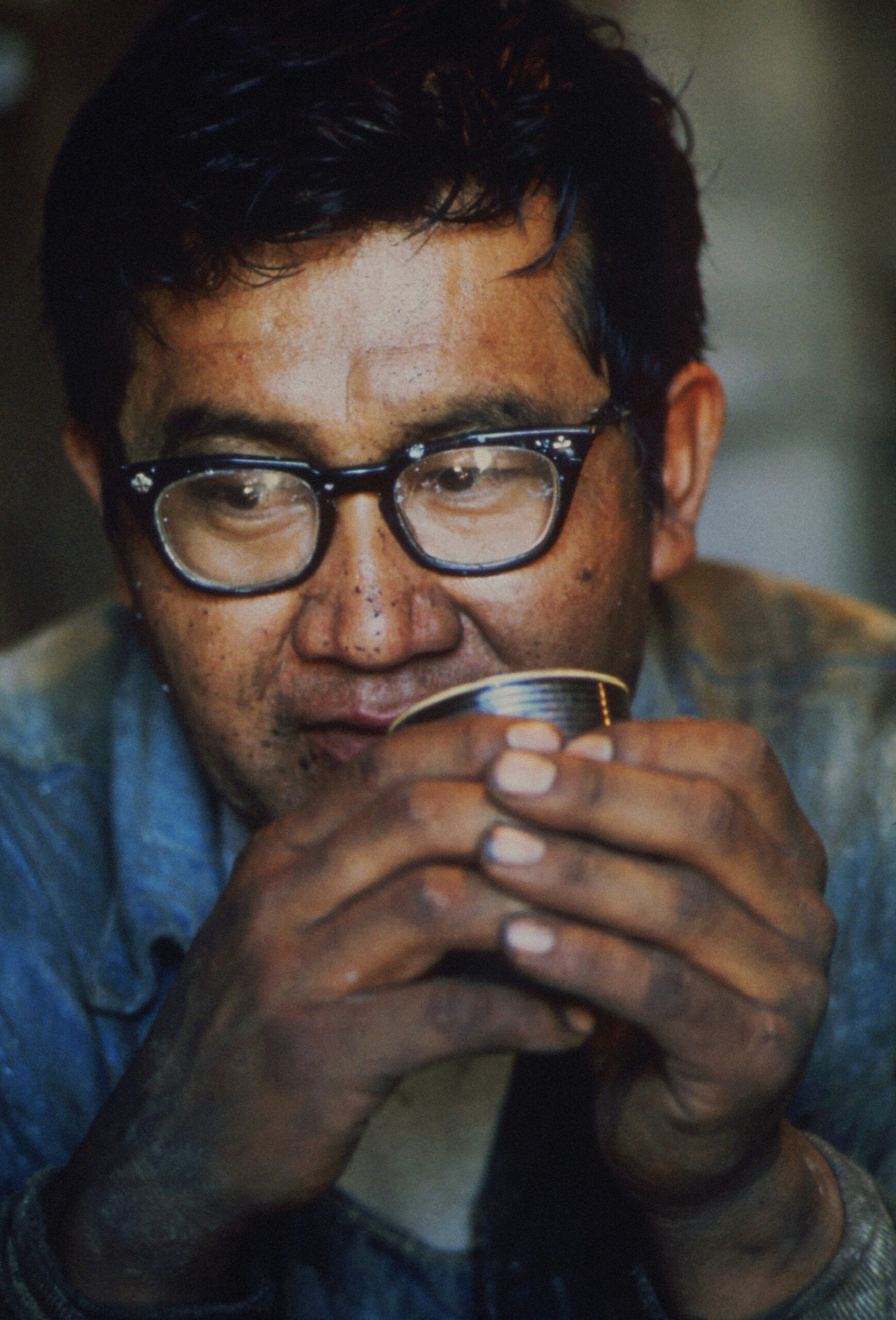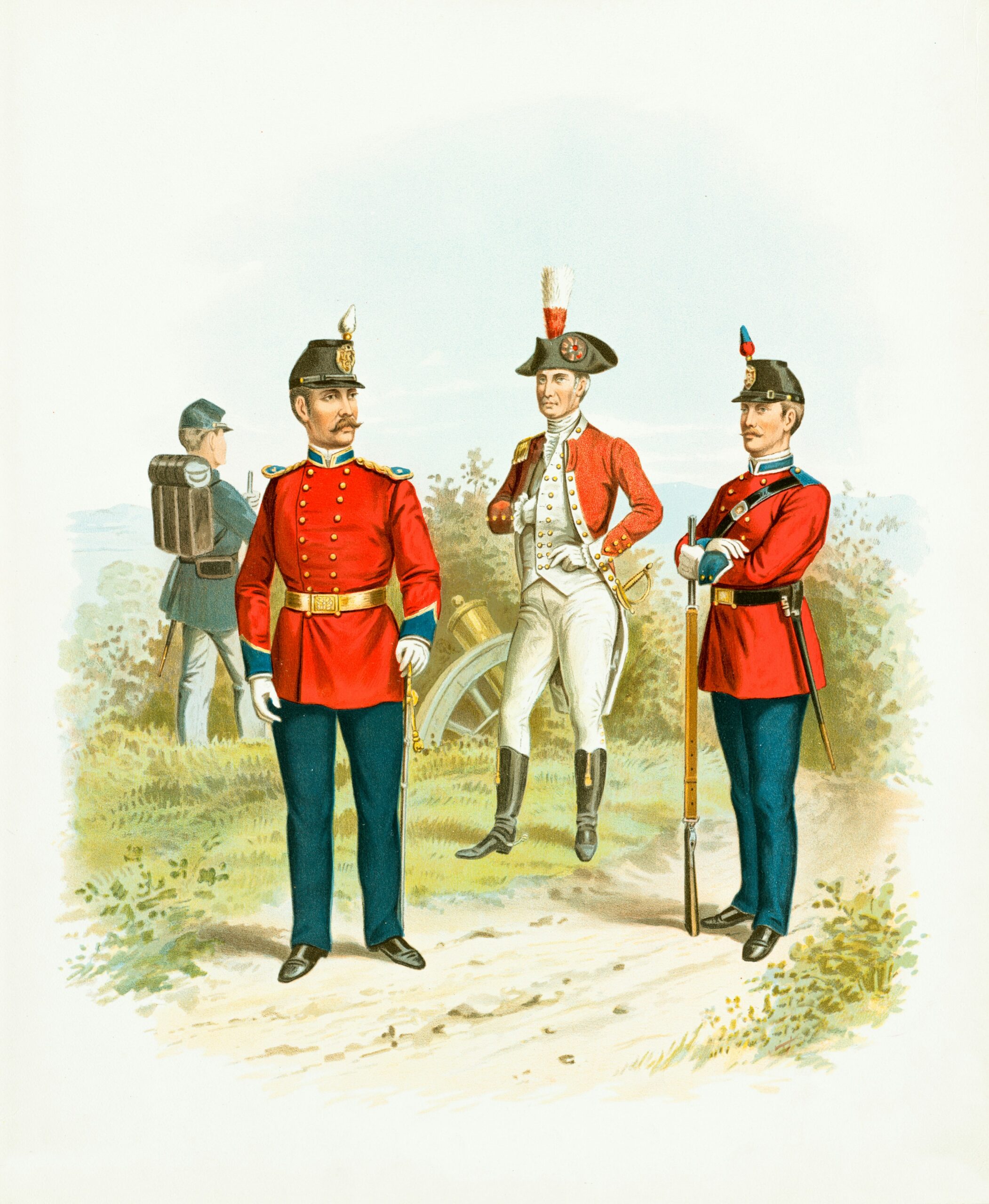If you’ve ever found yourself wondering about the unique features of rifle scopes for handguns, you’ve come to the right place. In this article, we’ll explore whether these scopes have any specialized features that set them apart from their rifle counterparts. So, whether you’re a seasoned shooter looking to enhance your handgun accuracy or simply curious about the world of firearm accessories, read on to discover the fascinating world of handgun scopes.
Understanding the Basics of Handgun Scopes
Exploring the general features of handgun scopes
Handgun scopes are optical devices specifically designed for use with handguns. They provide magnification and help shooters achieve greater accuracy and precision when shooting at a distance. Handgun scopes typically feature a compact and rugged design, extended eye relief, lower magnification levels, parallax correction, different types of reticles, various mounting options, and high light transmission.
The difference between handgun scopes and rifle scopes
While both handgun and rifle scopes serve the same purpose of enhancing accuracy and precision, there are some key differences between the two. One major difference is the design and compact structure. Handgun scopes are specifically built to withstand the recoil generated by handguns, which tend to have a more intense and abrupt recoil compared to rifles. Additionally, handgun scopes usually have a smaller objective lens and lower magnification levels than rifle scopes, as handguns are generally used for shorter range shooting.
Understanding the necessity of a specific scope for a handgun
Using a handgun without a dedicated scope can significantly hinder your accuracy and overall shooting performance. Handgun scopes are designed with features that cater to the unique characteristics and limitations of handguns. By utilizing a handgun scope, you can benefit from features such as extended eye relief, which allows for a greater distance between your eye and the scope, ensuring a comfortable and safe shooting experience.
Extended Eye Relief Feature
Explanation of the extended eye relief in handgun scopes
Extended eye relief refers to the distance between the shooter’s eye and the rear lens of the scope at which the shooter can obtain a full and clear field of view. Handgun scopes are equipped with extended eye relief to accommodate the high recoil and shorter length of handguns. This feature allows the shooter to maintain a safe distance from the scope and avoid any potential recoil-related injuries.
Importance of extended eye relief in shooting with handguns
When shooting with handguns, the recoil can be quite powerful due to the close proximity of the shooter’s face to the firearm. Extended eye relief ensures that the scope is positioned at a safe distance, minimizing the risk of injury caused by the recoil. Additionally, the extended eye relief in handgun scopes allows for a more comfortable shooting experience, as it provides ample space for the shooter to maintain a proper shooting stance and maintain visual awareness of their surroundings.
Comparing the eye relief in handgun and rifle scopes
While both handgun and rifle scopes offer some form of eye relief, handgun scopes generally have a longer eye relief compared to rifle scopes. This is because handguns tend to have more intense and abrupt recoil, necessitating a greater distance between the shooter’s eye and the scope. On the other hand, rifle scopes can afford a shorter eye relief due to the longer barrel and typically less intense recoil of rifles.

Design and Compact Structure
Analyzing the compact and rugged design of handgun scopes
Handgun scopes are designed with a compact and rugged structure to withstand the unique challenges posed by handguns. The compact design ensures that the scope does not interfere with the shooter’s grip or maneuverability of the firearm. The rugged construction ensures durability and withstands the high recoil forces generated by handguns without compromising the performance or accuracy of the scope.
Justifying the need for compactness in handgun scopes
The compactness of handgun scopes is crucial for maintaining the overall balance and maneuverability of the handgun. Unlike rifles, handguns are typically used in close-range shooting scenarios where quick and precise movements are essential. A compact scope optimizes the shooter’s ability to handle the firearm comfortably and effectively in various shooting positions.
Highlighting the effects of design on the scope’s performance
The design of a handgun scope directly impacts its performance. The compact and rugged structure not only ensures durability but also contributes to the scope’s overall stability. A well-designed scope will hold zero consistently, meaning it will maintain its accuracy even after being exposed to harsh recoil and environmental conditions. The durability and stability provided by the design of handgun scopes are essential for achieving reliable shot placement and accuracy in all shooting conditions.
Lower Magnification in Handgun Scopes
Why handgun scopes feature lower magnification
Handgun scopes typically feature lower magnification levels compared to rifle scopes due to the nature of handgun shooting. Handguns are primarily used for short to medium-range shooting, where the target is at a relatively close distance. Higher magnification may provide excessive zoom and severely limit the field of view, making it difficult to quickly acquire targets and track them accurately. Lower magnification levels in handgun scopes strike a balance between target acquisition speed, clarity, and the shooter’s ability to effectively engage targets.
Impact of lower magnification on accuracy
Contrary to popular belief, lower magnification does not necessarily compromise accuracy. In fact, for the intended range of handgun shooting, excessive magnification can hinder accuracy. Lower magnification allows for a wider field of view, providing the shooter with a better situational awareness and making it easier to acquire and track targets. This wider field of view is particularly crucial in dynamic shooting scenarios where quick target engagement is necessary.
Comparison of magnification levels in handgun and rifle scopes
Rifle scopes typically offer higher magnification levels compared to handgun scopes. This is because rifles are often used for long-range shooting, where precise shot placement at a greater distance is crucial. Handgun scopes, on the other hand, prioritize a wider field of view and faster target acquisition, resulting in lower magnification levels that are suitable for the shorter ranges at which handguns are typically used.

Importance of Parallax Correction
Explaining parallax correction in handgun scopes
Parallax is an optical phenomenon that occurs when the shooter’s eye is not perfectly aligned with the scope’s reticle, causing the target to appear to shift position when the shooter moves their eye. Parallax correction in handgun scopes ensures that the reticle and the target are always in the same focal plane, eliminating parallax error and allowing for precise shot placement.
Importance of parallax correction in precision shooting
In precision shooting, the elimination of parallax error is crucial for achieving accurate and consistent shot placement. Without parallax correction, even the slightest movement of the shooter’s eye can cause the reticle to appear to move in relation to the target. This can result in missed shots or inconsistent groupings, especially at longer distances. Handgun scopes with parallax correction enable shooters to maintain optimal sight alignment and enhance their overall shooting accuracy.
Exploring the differences in parallax correction between handgun and rifle scopes
While both handgun and rifle scopes can feature parallax correction, the adjustment range and ease of correction may differ. Handgun scopes are typically designed with parallax correction set at shorter distances, as they are primarily used for shorter range shooting. On the other hand, rifle scopes often have adjustable parallax correction that can be fine-tuned to accommodate the longer range capabilities of rifles and the need for ultra-precise shot placement.
The Role of Reticles in Handgun Scopes
Describing the function of reticles in handgun scopes
Reticles, also known as crosshairs, are the aiming points within the scope that help shooters align their firearm with the target. Handgun scopes offer a variety of reticle options, such as duplex, mil-dot, and illuminated reticles, to cater to different shooting preferences and conditions.
Explaining the various types of reticles available
Duplex reticles feature thick outer lines that taper to thinner lines toward the center, allowing for quick target acquisition and ease of use. Mil-dot reticles, on the other hand, provide additional reference points for range estimation and holdover adjustments. Illuminated reticles offer enhanced visibility in low light conditions and can be adjusted to different brightness settings depending on the shooter’s preference and environmental conditions.
Exploring the difference in reticles between handgun and rifle scopes
While the basic function of reticles remains the same for both handgun and rifle scopes, there may be variations in the reticle designs and options available. Handgun scopes often feature reticles that prioritize quick target acquisition and ease of use, considering the shorter range shooting scenarios where handguns are commonly utilized. Conversely, rifle scopes may offer a wider range of reticle options, including specialized long-range reticles designed for accurate shot placement at extended distances.

Mounting Options for Handgun Scopes
Discussion of various mounting options
Handgun scopes can be mounted using a variety of methods, including traditional scope rings, cantilever mounts, and specialized handgun-specific mounting systems. Scope rings are the most common mounting option and can be attached to a handgun’s built-in rail or custom rail adapters. Cantilever mounts provide additional eye relief options and allow for greater flexibility in positioning the scope on the handgun. Handgun-specific mounting systems, such as those utilizing a Picatinny rail, offer a dedicated and secure attachment method.
Reasons for the availability of flexible mounting options
The availability of flexible mounting options for handgun scopes caters to the diverse range of handguns on the market. Different handguns may have varying rail configurations, dimensions, and attachment points. Providing a range of mounting options ensures compatibility and allows shooters to find the most suitable mounting solution for their specific firearm. Additionally, flexible mounting options can accommodate individual shooting preferences, allowing shooters to achieve optimal eye relief and scope alignment.
Comparing the mounting options of handgun scopes and rifle scopes
While there may be some overlap in mounting options between handgun and rifle scopes, the specific mounting systems and accessories can differ. Rifle scopes often utilize Picatinny rails or specialized mounting systems designed for specific rifle models, offering a wider array of options to accommodate different rifles and shooting requirements. Handgun scopes, on the other hand, may have mounting options that are specifically tailored to the unique dimensions and rail configurations of various handguns.
Focus on Field of View
Clarifying the term ‘field of view’ in scope usage
Field of view refers to the extent of the visible image or area that can be observed through a scope. It is often measured in feet or meters at a given magnification and represents the width of the scene visible through the scope. A wider field of view allows for better situational awareness and target tracking, while a narrower field of view can provide more detail and precision on a specific target.
Why a wider field of view is necessary in handguns
In handgun shooting scenarios, a wider field of view is crucial due to the typically shorter range engagements and the potential need for quick target acquisition. A wider field of view enables shooters to quickly locate and engage targets, especially in dynamic shooting situations where targets may appear suddenly or be in constant motion. This emphasis on situational awareness makes a wider field of view highly desirable in handgun scopes.
Field of view in handgun scopes vs. rifle scopes
Rifle scopes often prioritize magnification and precision over a wider field of view due to the longer-range shooting capabilities of rifles. Handgun scopes, on the other hand, strike a balance between magnification and field of view to ensure optimal target acquisition and tracking. While both handgun and rifle scopes offer some degree of field of view, the wider field of view in handgun scopes makes them particularly suitable for quick and close-range shooting scenarios commonly associated with handguns.
Light Transmission and Lens Coating
Why high light transmission is desirable in handgun scopes
High light transmission is desirable in handgun scopes to ensure a bright and clear image, especially in low light conditions. It allows shooters to discern target details and aim accurately even in dimly lit environments. Whether shooting at dusk or in an indoor range with limited lighting, a scope with high light transmission ensures optimal visibility and maximizes the effectiveness of your handgun.
Exploring the role of lens coating on light transmission
Lens coatings, such as anti-reflective coatings, are applied to the lenses of handgun scopes to minimize the amount of light that is lost due to reflections on the lens surface. These coatings help reduce glare and increase light transmission, allowing for improved image quality and brightness. Multiple layers of lens coatings can further enhance light transmission by maximizing the percentage of light that reaches the shooter’s eye.
Comparing light transmission and lens coating in handgun and rifle scopes
Both handgun and rifle scopes prioritize high light transmission and utilize lens coatings to enhance image quality. However, the exact lens coatings and technologies used may differ between handgun and rifle scopes due to variations in the intended shooting scenarios and environmental considerations. Handgun scopes may prioritize coatings that excel in low light conditions, while rifle scopes may incorporate additional coatings to optimize long-range clarity and minimize distortions.
Durability and Weather Resistance
Correlating durability with the reliability of handgun scopes
Durability is a crucial factor in handgun scopes due to the intense recoil generated by handguns. Handgun scopes are specifically designed to withstand the forces associated with the abrupt recoil of handguns. A durable scope ensures that it can maintain its performance and hold zero despite repeated use and exposure to recoil forces. Investing in a durable handgun scope ensures long-lasting reliability and consistent shooting performance.
Importance of weather resistance in handgun scopes
Handgun scopes are often used in various weather conditions, ranging from rainy environments to extreme temperatures. Weather resistance is essential to protect the internal components of the scope and maintain its functionality under adverse conditions. A weather-resistant handgun scope is built to withstand moisture, fogging, and other environmental factors that could compromise image clarity and overall performance. By choosing a weather-resistant scope, you can confidently rely on your handgun optics in any weather condition.
Contrasting the durability and weather resistance of handgun and rifle scopes
While both handgun and rifle scopes prioritize durability and weather resistance, there may be variations in the level of protection offered. Handgun scopes are designed to handle the distinct challenges posed by handguns, which generate more intense and abrupt recoil forces than rifles. This focus on durability ensures that handgun scopes can withstand the unique demands of shooting with handguns. Additionally, weather resistance levels may differ, with some rifle scopes catering to long-range shooting scenarios and extreme weather conditions, while handgun scopes may prioritize compactness and suitability for shorter-range shooting in a wider range of weather conditions.
